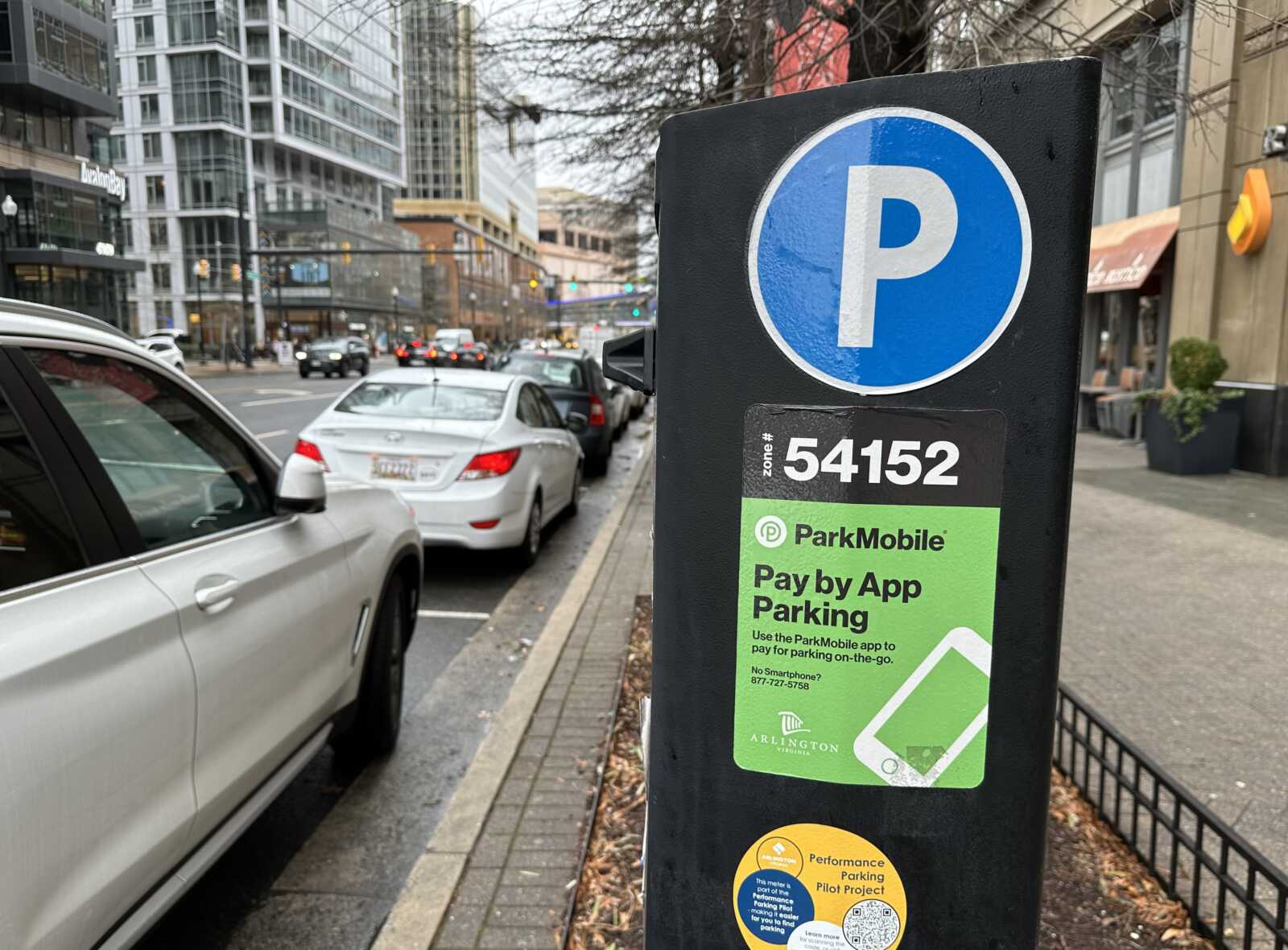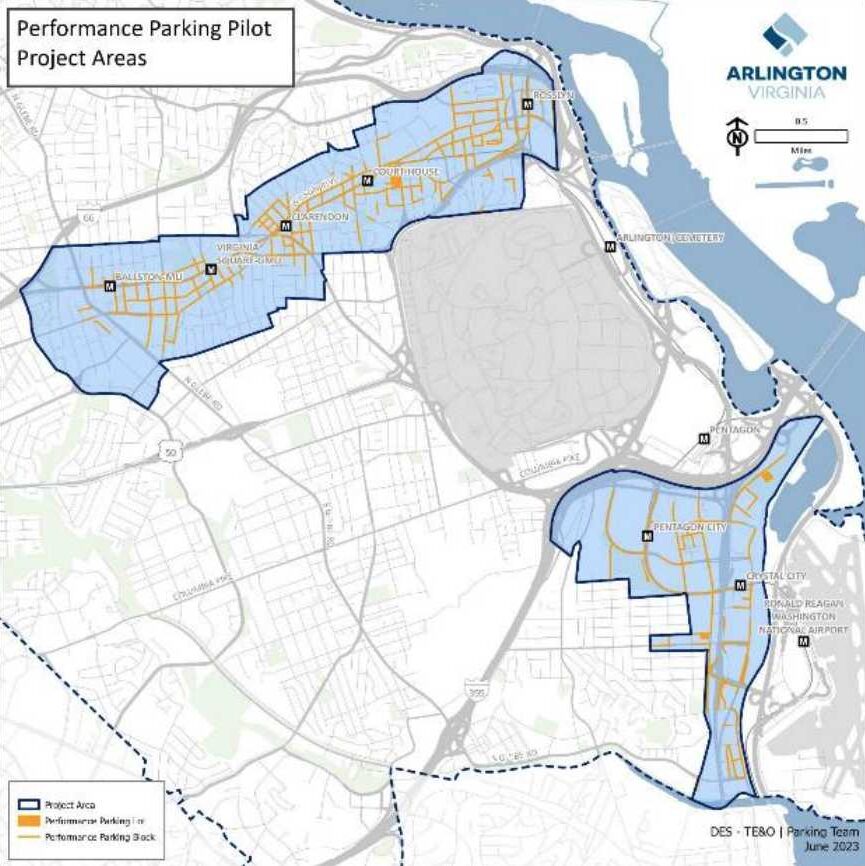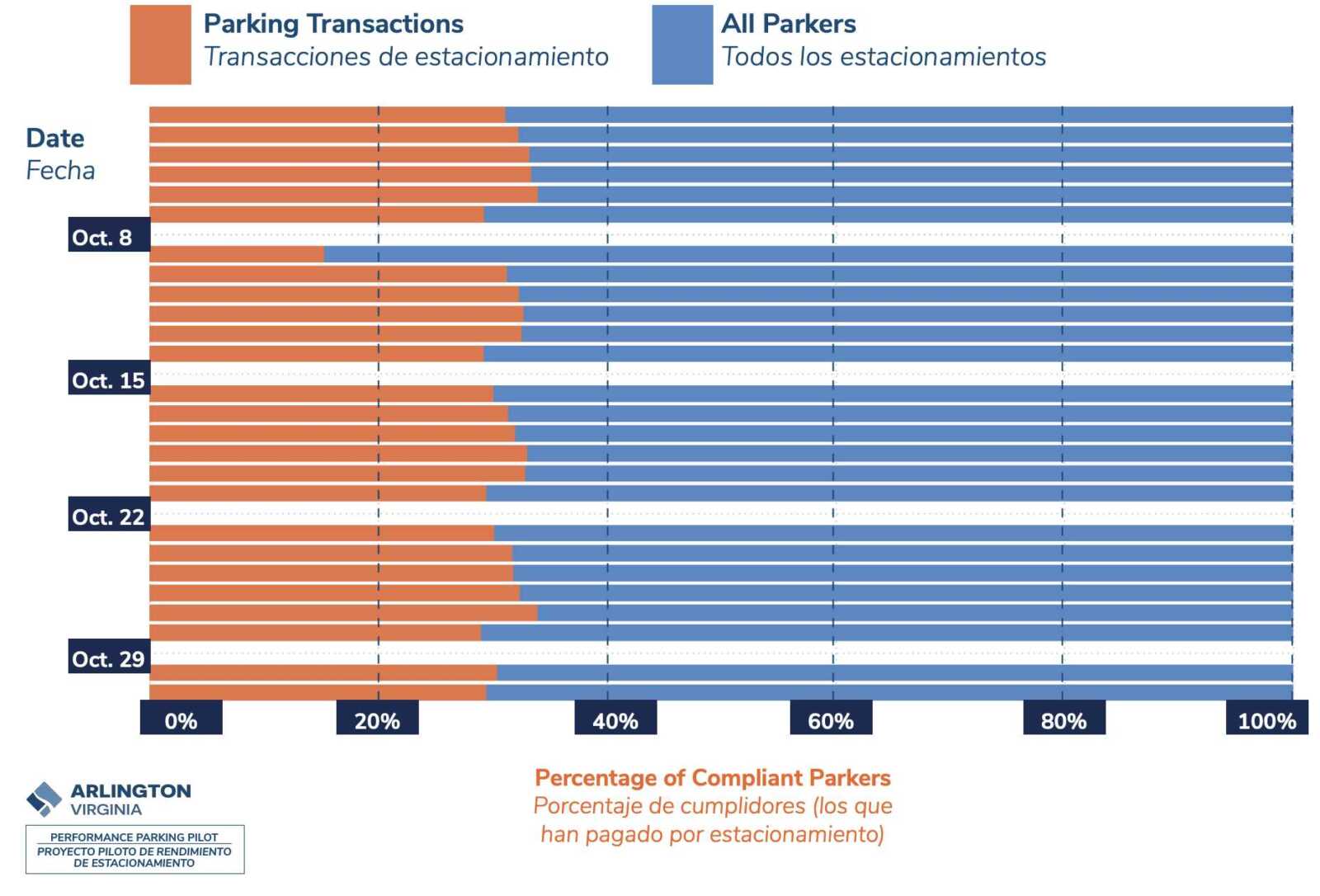
The cost to park in many of Arlington’s busiest neighborhoods could change March 1.
The most popular places to park along the Rosslyn-Ballston and Route 1 corridors could ultimately cost up to $5 per hour, according to a county report. Less popular spots, meanwhile, could become less expensive than the current rate.
These changes are part of a state-funded “performance parking” pilot project that seeks to make it easier to find a parking spot in Arlington by incentivizing drivers to park in underused areas.
Arlington County kicked off the project earlier this year, installing sensors to collect data on parking behavior and determine what streets and neighborhoods should see higher and lower prices.
“These goals relate to improving the experience with parking at the curb, as well as reducing the negative impacts associated with inefficient or unsuccessful search for parking,” the report says.
On Saturday, the Arlington County Board voted to hold a public hearing about a proposed ordinance on Feb. 24. If it is approved next month, the pilot program would last until March 2026.
Parking rates could change up to once every three months but large, sudden changes are unlikely, according to the report.
Although costs could vary based on the time of day and length of stay, the project would not involve surge pricing or an across-the-board rate hike. Instead, each rate change would probably bring a roughly $1 increase to parking rates at some spots and a $0.25 decrease to other spots.
Arlington’s parking rates are currently capped at $1.75 per hour at short-term meters and $1.50 per hour at long-term meters.

While county staff would set the rates, they could never charge more than $5 per hour without the County Board’s approval, per the proposed ordinance.
The pilot program would follow in the footsteps of similar initiatives in major cities including D.C., Boston and San Francisco.
“These pilots have generally shown measurable changes in drivers’ parking behavior, reductions in negative impacts, and more efficient use of available space,” the report notes.
County staff would track this project’s effectiveness using some 4,500 sensors installed in parking spaces in the Rosslyn-Ballston and Route 1 corridors. The county has already begun investigating where and when parking is most readily available in these areas — along with how often drivers pay for parking.
A recent analysis found that on average, only a third of vehicles parked at meters in these areas had actually paid to be there, which will inform how the county uses its limited cadre of parking meter enforcers.

Although similar programs have tended to increase revenue, the report says this project is primarily designed to improve parking conditions for drivers — not to extract more money from them.
“Intentionally, there is no project goal regarding revenue impact,” the report says. “This is because the project goals are about curb space performance from the community and customer perspective.”

